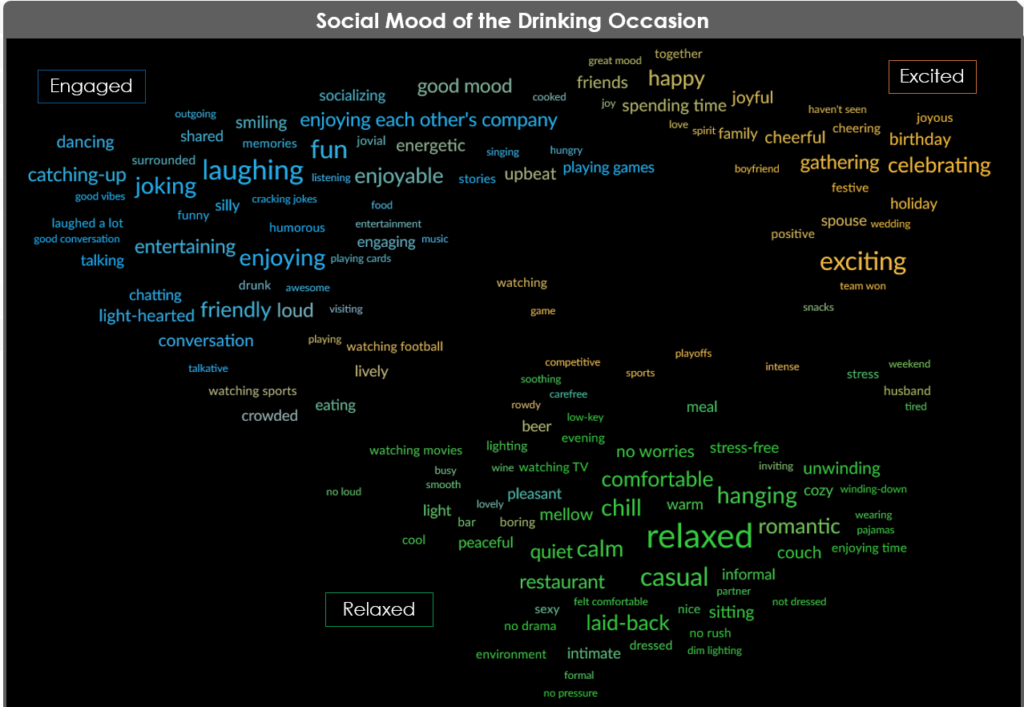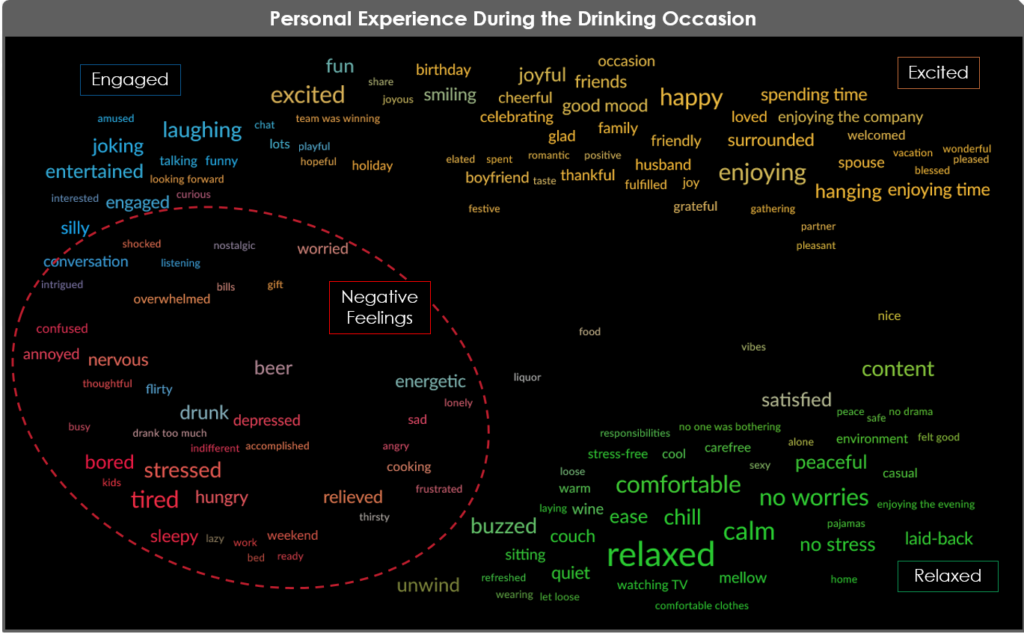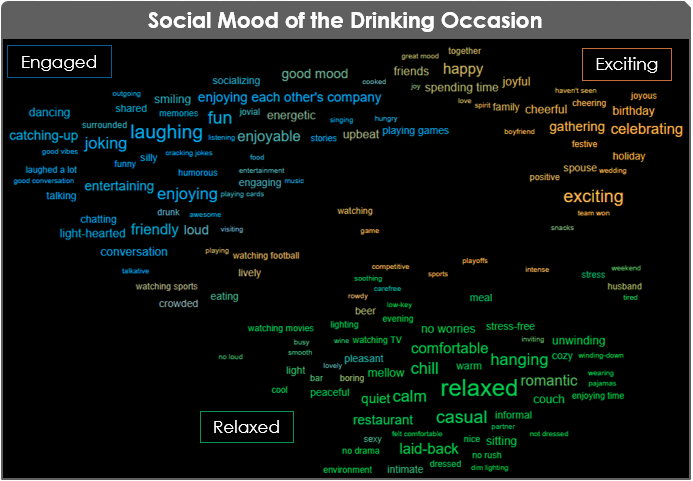MAi Research recently conducted exploratory research [efn_note]This research consisted of an online survey administered to 2,280 respondents between 21 and 39 years of age who consume alcohol at least once every 3 months.[/efn_note] to better understand the Millennial consumer’s shifting consumption patterns in the alcoholic beverage category — particularly the emotional aspect of the drinking occasion and how it affects beverage selection.
Asking open-ended questions and analyzing the text data with our Pathfinder Text Analytics methodology allowed us to capture the complexity of emotion/occasion interactions while ensuring that we captured consumers’ unfiltered thoughts and feelings in their own words.
Our research suggests that not only do emotions play a key role during drinking occasions, but that consumers are as likely to consume these beverages for their emotional impact as for their taste or alcoholic effect.
Even more interesting is the contrast seen between the social mood of drinking occasions, which are dominated by positive feelings of excitement, relaxation, and social engagement:

And the personal experience of the individual, which shares the same positive themes but also includes a strong set of negative feelings:

Comparing the social emotions with the personal experience like this reveals a sharp contrast between how consumers feel and how they want to feel during drinking occasions. For many, their personal mood falls short of the positive energy of the social group — and they may be looking for alcoholic beverages to provide a desired “boost” into stronger feelings of excitement, relaxation, and social engagement.
What does this mean for brands in the Spirits category?
This “interconnectedness” of the drinking occasion with powerful positive and negative emotions, as well as the emotion-infused concept of social engagement, suggests that brand messaging should tightly integrate these emotional and engagement themes to build stronger connections with consumers.
But the emotional message must be done right. It should:
- Match the emotional need and engagement type to the appropriate occasion/group setting;
- Be relevant to the personal mood or experience, not necessarily the overall social mood; and
- Demonstrate the brand’s ability to alleviate negative feelings to enable more meaningful engagement.
We have more in-depth analytics and findings as part of this research that were left out of this article.
For more information about Pathfinder Text Analytics or this research in particular, please contact us (info@mairesearch.com) to set up some time for us to take you through our findings and find ways we might help you by providing deeper insights into how your customers think and talk about your brands, products, and categories.










